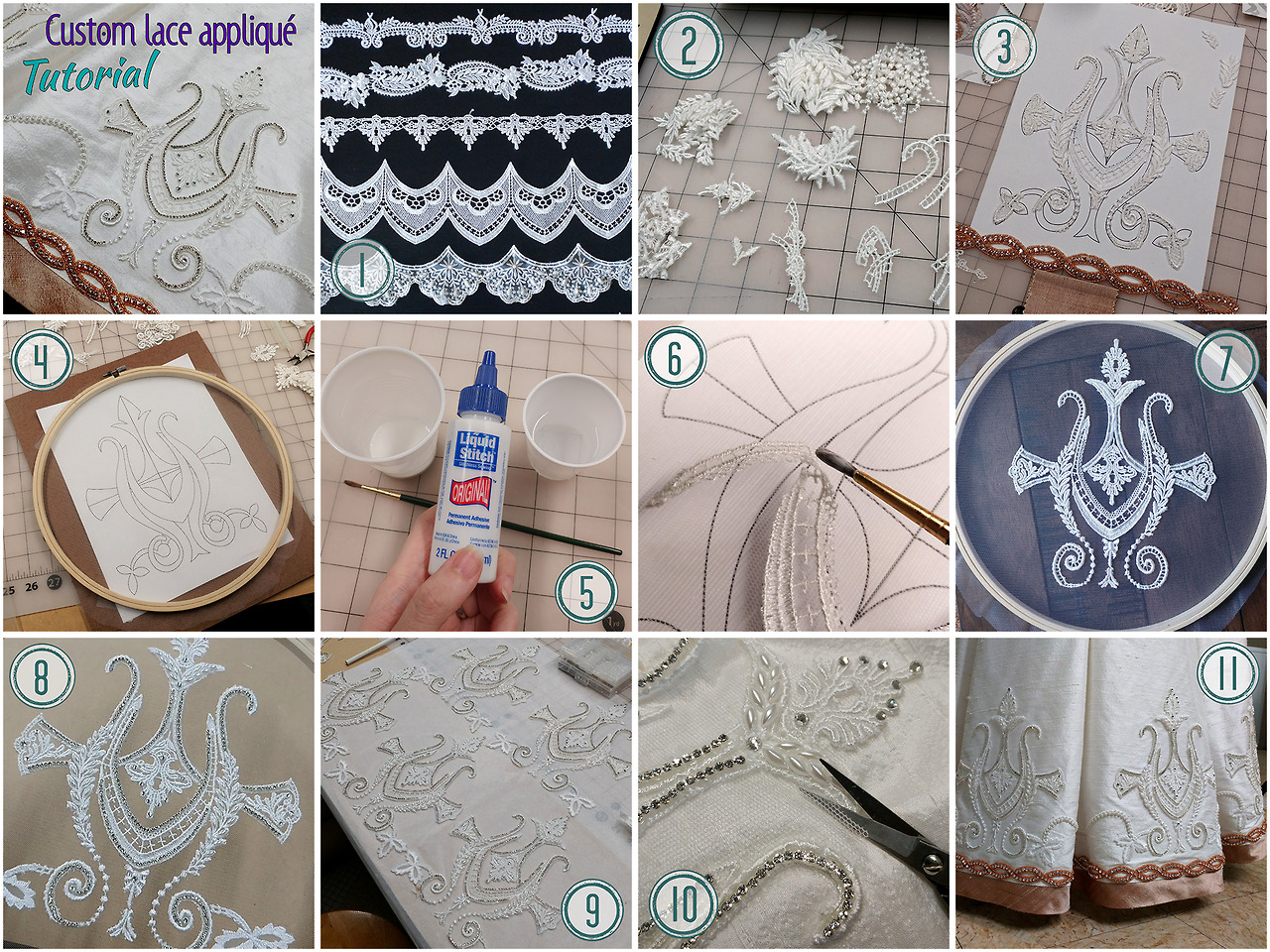atelierheidi: How to make custom lace appliques – the “Frankenlace” method A lot o
atelierheidi: How to make custom lace appliques – the “Frankenlace” method A lot of people asked for more info on how I made the appliques that decorate the bottom of Zelda’s gown. Here’s my tutorial for the whole process! This method can be used to make all kinds of applique shapes and designs if you get creative with it. These lace appliques are made out of other lace – hence the nickname. To get started, you’ll need to collect a few lace trims to use as raw material. Look for styles that are similar or complement each other, because you’ll be combining them. This is some, but not all, of the trims I used. I bought these in the LA fabric district, but most are available at trimexpoonline.com. Cut your lace down into smaller pieces that are more modular. Don’t cut up ALL your lace – this is just an experimentation stage, to practice rearranging the design. Using a template of your desired shape (I made mine digitally, but you can hand draw one too) practice arranging your pieces until you find a design that suits your needs. This is not my final design in the picture – I went through several versions before I was totally happy with how it looked. You might discover that you need more lace, which is why planning and experimentation are so important. When you’re satisfied with how it looks, it’s time to start putting it all together. You’ll need an embroidery hoop large enough to cover your whole template, plus some netting that is as close to transparent as you can find. Most generic tulle is NOT fine enough to do well with this technique – the holes are too large and the tulle stretches too much when handled. Look for netting that does not stretch or fray, if possible. Put some netting in your embroidery hoop, tightening the surface like a drum. I taped my template to a small sheet of masonite to give myself a portable work surface. I also ended up using clamps to hold the embroidery hoop to the masonite, but forgot to get a picture. This is optional, but really helps the design from shifting too much as you work. Tools for the next step: fabric glue (other brands work too), a small paintbrush, and a water cup. I watered my glue down a little to make it easier to spread with the paintbrush. Be careful not to add TOO much water, or your glue will be too thin, not grip well, and take a long time to dry. Working in small sections, begin gluing your lace pieces onto the netting. Start at the center and work outward, if possible. Continue until all your lace pieces are glued onto the netting. Here’s what mine looked like with all the lace attached! At this point, I flipped the embroidery hoop over and applied a second coat of glue over the entire back of the work. The netting is so thin that you can continue to apply more glue from the backside to get a more secure grip. Optional: add rhinestones to taste. I used E6000 for this step. Not every applique requires rhinestones, but in this case I wanted Zelda to sparkle as much as possible. Repeat to create as many appliques as you need! Zelda has 8 along the bottom of her dress. Here’s part of my assembly line. When you’re ready to attach the applique to your fashion fabric, trim away some of the netting along the outside, but leave any “interior” portions that help stabilize the design. I simply glued my appliques onto the silk, but I later went back and hand-stitched them down for a more secure hold. After they are properly attached to your fabric, you can VERY CAREFULLY trim away the “interior” pockets of plain netting using small scissors. The final look of my gown, after all the appliques and trim were attached. This method is very time consuming and requires a lot of patience and concentration – but I just love the results! I wanted to achieve the look of professionally-made applique, but without access to industrial equipment, this was the next best thing I could come up with. The white-on-white effect is subtle, but matches the look I was going for. Photo by Vontography. I hope this is helpful to some of you in your own costume projects. Let me know if you have any questions, and good luck! -- source link
Tumblr Blog : atelierheidi.tumblr.com
#cosplay resources
